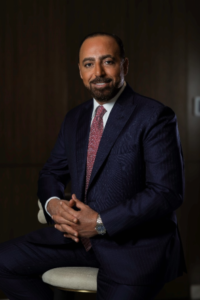
catherine the great furniture
Introduction to catherine the great furniture
catherine the great furniture, the Empress of Russia from 1762 to 1796, was not only a powerful ruler but also a great patron of the arts. Her reign marked a golden age for Russian culture, particularly in the fields of art, architecture, and interior design. Among her many contributions, Catherine’s influence on furniture design is especially notable. This article delves into the fascinating world of Catherine the Great’s furniture, exploring its history, characteristics, and legacy.
The Legacy of Catherine the Great
Early Life and Ascension
Catherine the Great was born as Princess Sophie of Anhalt-Zerbst in Stettin, Prussia (now Szczecin, Poland) in 1729. She married Peter III of Russia, and upon his abdication, she became Empress of Russia. Her reign from 1762 to 1796 is often considered the pinnacle of the Russian Empire’s cultural and political power.
Patron of the Arts
Catherine was an ardent patron of the arts, amassing an extensive collection of artworks, books, and artifacts. Her support extended to architecture and interior design, where she sought to modernize Russian aesthetics by incorporating European influences.
Influence on Russian Furniture Design
Introduction of European Styles
Catherine’s reign marked a significant shift in Russian furniture design, heavily influenced by her admiration for European styles. She introduced the elegance and refinement of French and Italian furniture to Russia, integrating these elements into her palaces.
Adoption of Rococo and Neoclassicism
Under Catherine’s influence, Rococo and Neoclassicism became prominent in Russian furniture. Rococo, with its ornate and playful details, and Neoclassicism, with its focus on simplicity and classical motifs, were both embraced and adapted to Russian tastes.
Key Characteristics of Catherine’s Furniture
Ornate Detailing and Craftsmanship
Catherine’s furniture is renowned for its intricate detailing and exceptional craftsmanship. Artisans employed a variety of techniques, including marquetry, gilding, and carving, to create pieces that were both functional and highly decorative.
Use of Luxurious Materials
Luxurious materials such as mahogany, ebony, and ivory were commonly used in the creation of Catherine’s furniture. These materials, combined with rich fabrics like silk and velvet, added to the opulence of her interiors.
Iconic Furniture Pieces
Famous Chairs and Sofas
Among the most notable pieces are the elegantly designed chairs and sofas, which often featured intricate carvings, gilded frames, and plush upholstery. These pieces were not only functional but also served as symbols of wealth and status.
Tables and Desks
Catherine’s collection also included a variety of tables and desks, many of which were designed for both aesthetic appeal and practicality. These pieces often featured ornate legs, inlaid tops, and elaborate veneers.
Palaces Adorned with Exquisite Furniture
Winter Palace
The Winter Palace, one of Catherine’s primary residences, was lavishly furnished with pieces that reflected her sophisticated taste. The grand halls and private chambers were adorned with furniture that showcased the finest Russian and European craftsmanship.
Catherine Palace
Located in Tsarskoye Selo, the Catherine Palace is another testament to her exquisite taste in furniture. The palace’s rooms were furnished with an array of sumptuous pieces, from opulent thrones to delicate writing desks.
Collaborations with Renowned Artisans
Work with Charles Cameron
Charles Cameron, a Scottish architect and designer, played a crucial role in shaping the interiors of Catherine’s palaces. His expertise in Neoclassical design left a lasting impact on Russian furniture, blending classical elements with contemporary styles.
Contributions of Andrei Voronikhin
Andrei Voronikhin, a Russian architect and designer, also contributed significantly to the development of Catherine’s furniture style. His works often incorporated elements of Russian traditional craftsmanship with European influences.
Catherine the Great’s Personal Taste
Favorite Styles and Motifs
Catherine had a keen eye for design and favored styles that combined elegance with functionality. She was particularly fond of classical motifs, including Greek and Roman designs, which were reflected in many of her furniture pieces.
Influence of Classical Antiquity
Her admiration for classical antiquity was evident in her preference for Neoclassical furniture. This style, characterized by clean lines, symmetry, and references to ancient Greece and Rome, became a hallmark of her interiors.
Restoration and Preservation Efforts
Modern Conservation Techniques
Restoring and preserving Catherine’s furniture requires meticulous care and advanced conservation techniques. Experts employ various methods to ensure the longevity of these historical pieces, from controlled environments to delicate cleaning procedures.
Challenges in Preservation
Despite best efforts, preserving 18th-century furniture poses significant challenges. Factors such as environmental conditions, aging materials, and historical authenticity must all be carefully managed to maintain these treasures for future generations.
Influence on Future Generations
Impact on 19th Century Furniture Design
Catherine’s influence extended well beyond her reign, shaping the course of Russian furniture design in the 19th century. Her integration of European styles with Russian craftsmanship set a precedent for future designers.
Legacy in Modern Interior Design
Today, Catherine the Great’s legacy can be seen in modern interior design, where her preference for luxurious materials and intricate details continues to inspire designers around the world.
Exhibitions and Museums
Notable Collections and Displays
Numerous museums and exhibitions worldwide showcase Catherine the Great’s furniture. The Hermitage Museum in St. Petersburg, for instance, houses an extensive collection of her furnishings, providing a glimpse into her opulent lifestyle.
Visiting Historic Sites
Visiting historic sites such as the Winter Palace and Catherine Palace allows enthusiasts to experience the grandeur of her interiors firsthand. These sites offer a unique opportunity to appreciate the artistry and craftsmanship of her era.
Comparative Analysis
Catherine’s Furniture vs. French and Italian Styles
Catherine’s furniture, while heavily influenced by French and Italian styles, also retained distinct Russian elements. This fusion created a unique aesthetic that distinguished her pieces from their European counterparts.
Influence on Contemporary Designers
Contemporary designers continue to draw inspiration from Catherine’s furniture, incorporating elements of her style into modern creations. This ongoing influence underscores her enduring impact on the world of interior design.
Catherine the Great’s Cultural Impact
Broader Influence on Russian Culture
Beyond furniture, Catherine the Great’s patronage had a profound impact on Russian culture. Her support for the arts, education, and architecture helped to elevate Russia’s cultural standing on the world stage.
Patronage Beyond Furniture
Catherine’s influence extended to other areas of the arts, including painting, sculpture, and literature. Her reign fostered a cultural renaissance that left a lasting legacy in Russian history.
FAQs
What styles influenced Catherine the Great’s furniture?
Catherine’s furniture was influenced by French Rococo and Neoclassicism, incorporating elements of classical antiquity and European elegance.
Who were some of the artisans Catherine collaborated with?
Catherine worked with renowned artisans such as Charles Cameron and Andrei Voronikhin, who helped shape the distinctive style of her interiors.
What materials were commonly used in Catherine’s furniture?
Luxurious materials like mahogany, ebony, ivory, silk, and velvet were commonly used in Catherine’s furniture, adding to the opulence of her designs.
Where can I see Catherine the Great’s furniture today?
Catherine’s furniture can be seen in museums like the Hermitage Museum in St. Petersburg and historic sites such as the Winter Palace and Catherine Palace.
How did Catherine’s furniture influence future generations?
Catherine’s integration of European styles with Russian craftsmanship set a precedent for future designers, influencing 19th-century and modern interior design.
What challenges are involved in preserving Catherine’s furniture?
Preserving 18th-century furniture involves managing environmental conditions, aging materials, and maintaining historical authenticity.
Conclusion
Catherine the Great’s furniture remains a testament to her refined taste and cultural vision. Her influence on Russian art and design continues to resonate today, with her legacy evident in the opulent furnishings that once adorned her palaces. Through meticulous preservation and continued admiration, the world can still appreciate the grandeur and elegance of Catherine the Great’s contributions to interior design.

